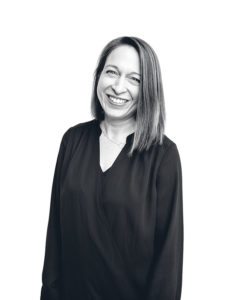Being Bold in Higher Ed
Higher-ed institutions are facing intimidating headwinds: funding, affordability, student mental health, and the public questioning their relevance–to name a few. As such, schools are taking drastic measures to forge forward. They’re rethinking everything: who they recruit, the degrees they offer, and the format in which they teach.
As a brand and marketing agency with expertise in higher-ed branding, Sullivan is regularly asked by our higher-ed partners to embolden their marketing efforts to match the boldness of their objectives, ranging from recruitment to community-building and fundraising.
But on par with their desire to be bold are the barriers that stand in their way. Below are some examples of how three institutions have found the courage to be bold when boldness can be tricky, scary, and hard to get behind.
#1. Find your flavor of ‘bold.’
Boldness is understood as splashy, loud, and dare say–controversial. Think Nike and Colin Kaepernick or the now-regular celebrity appearances in brand promotions, like GM’s star-studded cast in their recent Super Bowl ad. But being bold doesn’t have to be ostentatious; being bold merely requires a willingness to do things differently. It’s a mindset shift–a transition from humility to confidence that gives you the strength to shake things up.
For Duke’s Undergraduate Admissions team, being bold meant focusing on the student they wanted versus trying to be all-things-to-everyone. It meant capturing that special Duke spirit–the buzz of Brodhead Center and unmatched fandom of ‘Cameron Crazies’–in their communications to attract the collaborative and impact-driven students for whom it’s made.
Resulting from our work together was a website and recruiting materials that are bold not because they’re loud, but because they’re illustrative of Duke taking a stand to embrace what makes the school unique versus blending in with its peers.
#2. Remember, it’s not about you (sorry!).
Throughout engagements, it’s easy for our higher-ed partners to get weighed down by bureaucracy. There are a lot of cooks in the kitchen from different factions of the institution arriving with and fighting for their own biases. To ensure our clients can quiet the voices in their head and reach consensus, we make sure to frame every recommendation according to the agreed upon strategy that transcends any one internal or external need.
Recently, we consolidated three of Yale School of Music’s digital properties into one with a reimagined website that caters to various audiences: prospective and existing students, near and far community members, and music enthusiasts. Centralizing their digital ecosystem was a bold step for them–it meant shutting down legacy URLs, scrapping outdated content, and formalizing user permissions.
There was dissent! But ultimately, alignment was achieved, because it was never about any single stakeholder in the room. It was about elevating all of YSM from a graduate school to an indispensable platform where music is preserved, studied, and shared.
#3. Make it real.
A big barrier that can stand in the way of a big idea and its activation is ownership. When a client is insecure about carrying the torch of your work forward, there’s little hope for the future of your bold recommendations.
To engender confidence in our clients, we make the work feel real–and tangible–by bringing them into the creative process. For example, Lehigh University–with whom we partnered on their $1-billion capital campaign–was instrumental in the development of their campaign guidelines. We worked with them to go beyond your run-of-the-mill guideline format by referencing not only the how, but the why behind our creative choices. Alongside examples of our suggested black and white portraiture style, for instance, is a brief explanation of how that specific type of photography celebrates the importance of people within the campaign narrative.
Ownership comes with understanding, which generates buy-in and spurs action. If this isn’t proof of Lehigh owning their bold campaign in a bold way, I don’t know what is.
Summing it up
So, when our higher-ed clients come to us wanting to be bold–we are 100% in. As a matter of fact, that’s often why potential clients choose us. Oftentimes, though, what they perceive as ‘bold’ from the get-go is not where we land: ultimately, through a tight strategy, consistent collaboration, and consensus-building, we arrive at something much, much bigger and more meaningful. We push them to be bold not for boldness sake, but to celebrate who they truly are.


